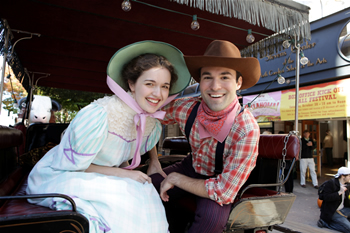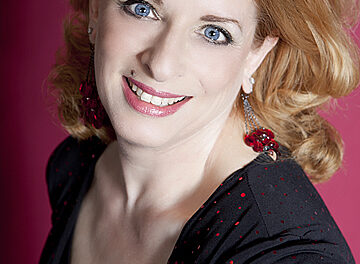For the holiday season performance of its 19th year, the 17-voice Early Music a capella ensemble Fortuna directed by Patricia Petersen presented a recital entitled “O Christo nasce” of Renaissance and early Baroque Christmas choral music from Portugal, the other country on the Iberian peninsula that is less heard about and from, but that has an equally, some might say even more illustrious tradition than its geographic partner Spain, which dominated it from 1580 to 1640, especially if you subtract from the latter the accomplishments of its region of Catalonia. The large sanctuary of Durham’s First Presbyterian Church was totally empty when I arrived on December 16, but was eventually occupied by some 80-90 people, some arriving late and a few leaving early, alas, for the final performance of the group’s traditional set of one each in the Triangle’s three cities.
The centerpiece of the well-built program (as they all customarily are) was the Christmas Day Mass Missa Tui sunt coeli (The Heavens are yours) by Manuel Cardoso (1566-1650) based on an original chant motif to the Psalm verse which does not actually appear in the work itself, of course. Its standard six parts were preceded, separated, and followed by an assortment of brief text settings, hymns, and vilhançicos by such composers unknown to us as Estêvão Lopes Morago (c.1575-after 1630), Filipe de Magalhães (c.1571-1652), Gaspar Fernandes (c.1570-c.1629), Manuel Mendes (c.1547-1605), Estevão de Brito (c.1575-1641), Francisco de Santiago (c.1578-1644), and Dom Pedro de Christo (c.1545-1618). These included a Gaudete cum laetitia (Rejoice with gladness), two settings of Christus natus est nobis (Christ is born to us), a Laetentur coeli (Let the heavens rejoice), an Alleluia , a Salve Regina (Hail, Holy Queen), and an Ave maris stella (Hail star of the sea), among others. All were in Latin except for the last piece of the evening, the vilhançico Es nasçido (He is born), which was in a vernacular that was a strange mixture primarily of Spanish with Portuguese words scattered here and there, undoubtedly due not only to the foreign political control but also to the Spanish origin of the form itself. Nonetheless, it was the most spirited piece of the evening, and made this reviewer wish for more of its type. Mendes’ Alleluia was especially attractive and Francisco de Santiago’s Virginis summe ([Let us all praise] the Virgin’s son) also stood out as having a particularly pretty melody line. The Mass was also very interesting, lovely, and unlike the usual fare, with each section quite different its companions. A portion of de Brito’s Ave maris stella was reprised as an encore.
The chorus’ performance was of the usual very high quality with some fine solo work by various members to provide the introductory chant openings to the settings. The influence of the music of the Italian Giovanni Pierluigi da Palestrina (1525-94), which so heavily dominated the whole of Europe during and after his lifetime, is felt in a good deal of the music, yet many pieces showed traits distinctive of their composers and the Portuguese musical tradition so long and strongly supported by the royal family.
As is always the case, the printed program was a model of its kind with excellent notes that were the fruit of research and scholarship on the part of their author, chorister Lisa Brown, complete texts and side-by-side credited translations, mostly by other choristers Jaap Folmer and Kent Mullikin, the whole almost totally free of typos. The list of ensemble members would have benefited either by indication of each one’s vocal part or arrangement in that order rather than strictly alphabetical. This ensemble is every bit as good as some others with nationwide reputations and their consequent greater name recognition. The regular followers know it and try not to miss their two annual presentations. Watch for the spring recital in our calendar and join them. The singers do them for the love of singing and the listeners love their fine singing!












